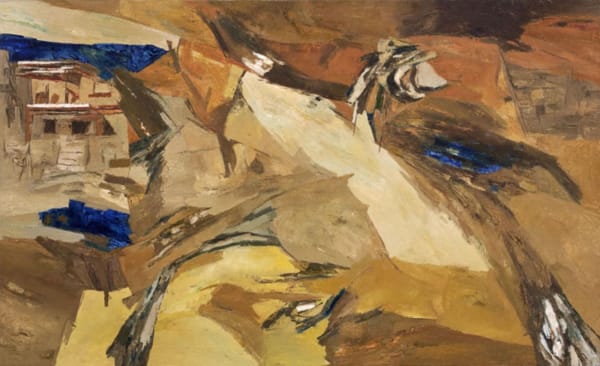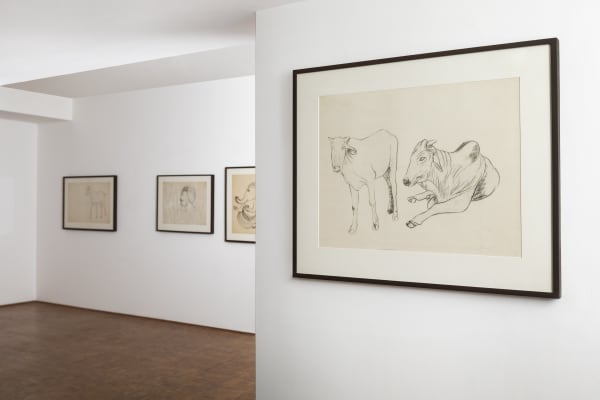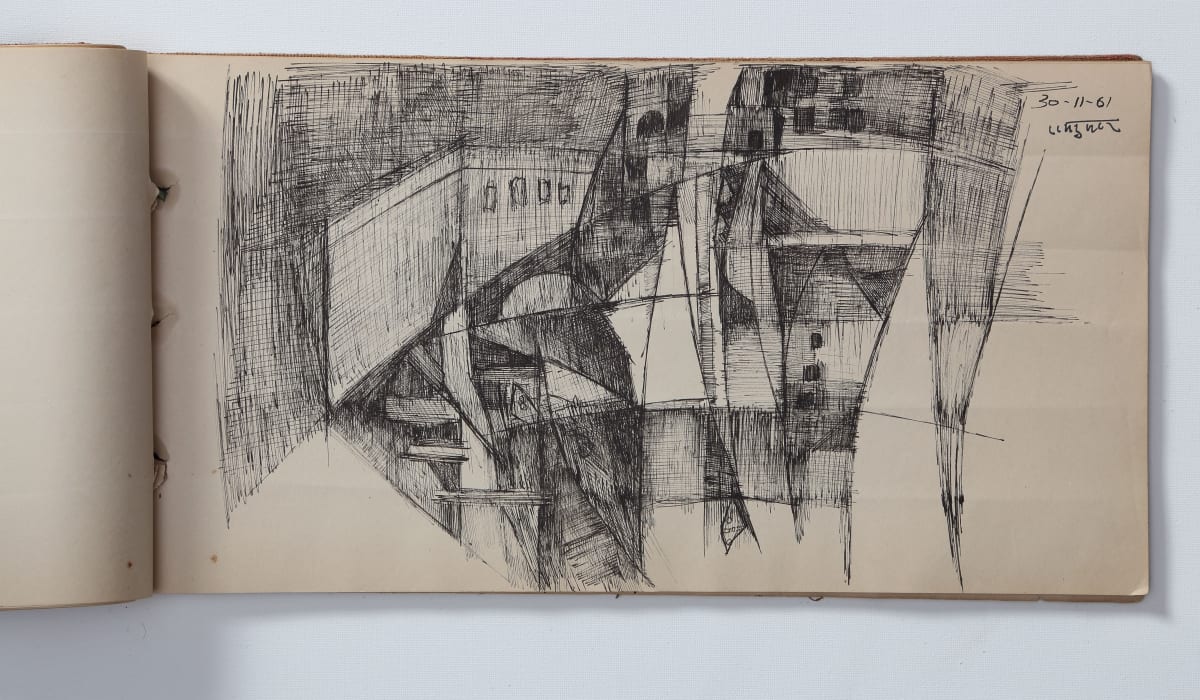Ram Kumar Indian, 1924-2018
Born in 1924 in Simla, Ram Kumar was among India’s leading modernists. In the early 1930s, whilst still at school, Ram Kumar harbored greater intentions to be a writer rather than an artist, and it was only around 1945 that he formally started seeking out instruction in the arts. Having studied economics at St. Stephen’s College, New Delhi, in 1946, he went to Paris to study painting under Andre Lhote and Fernard Leger from 1949 to 1952, before which he worked briefly as a journalist. He remains a vital part of first generation post-colonial Indian artists, a member of the fabled Progressive Artist’s Group, alongside F.N. Souza, S.H. Raza and M.F. Husain.
Ram Kumar’s work predominantly comprise abstract renditions of landscapes with jagged topographical contours, supplemented with a sense of ambient despair. Responding to different interpretations of landscape as a concept, Kumar uses a variety of textures to map out its architectonics through abstract strokes. Much of his oeuvre is dictated by a preoccupation with nature and being-ness, and the relationships between space, objects and individuals.
In his lifetime he was also the recipient of many awards, including the Padma Shri in 1972 and the Prem Chand Puraskar for a collection of short stories. Some of his most recent exhibitions include ‘Split Visions Abstractions in Modern Indian Painting’, Aicon Gallery, New York, 2016 and retrospectives including ‘Masterpieces of Indian Modern Art’, DAG Modern, 2016; ‘After Midnight: Indian Modernism to Contemporary India, 1947-1997’, Queens Museum, Queens, 2015; amongst others.
The artist passed away in 2018 at the age of 93.

People, Places, Things
D-40 & D-53 Defence Colony, New Delhi6 May - 15 June 2024Belonging to someone, somewhere or something is an experiential arrangement. These social relations form the crux of the human behavioral sciences, which seek to study why human beings engage in...Read more
Time of the Line
D-40 Defence Colony, New Delhi2 May - 10 July 2023A line is a thing of many. It can carry a poem from a spark to its end, or be telling of age when gathered around cheekbones, or ponder a...Read more
Ram Kumar: Recent Works
D-40 Defence Colony, New Delhi20 January - 22 February 2017The process in his work has always been a subtle reference to what came before, and even though the artist has not returned to the ‘figurative’ nature of his work...Read more
Ram Kumar and Susanta Mandal | Reflected Verses II
D-40 Defence Colony, New Delhi22 October - 19 November 2016Continuing our series of conversations between artists, we bring together works by Susanta Mandal and Ram Kumar. The exhibition presents two takes on the grid, the device that art historian...Read more













